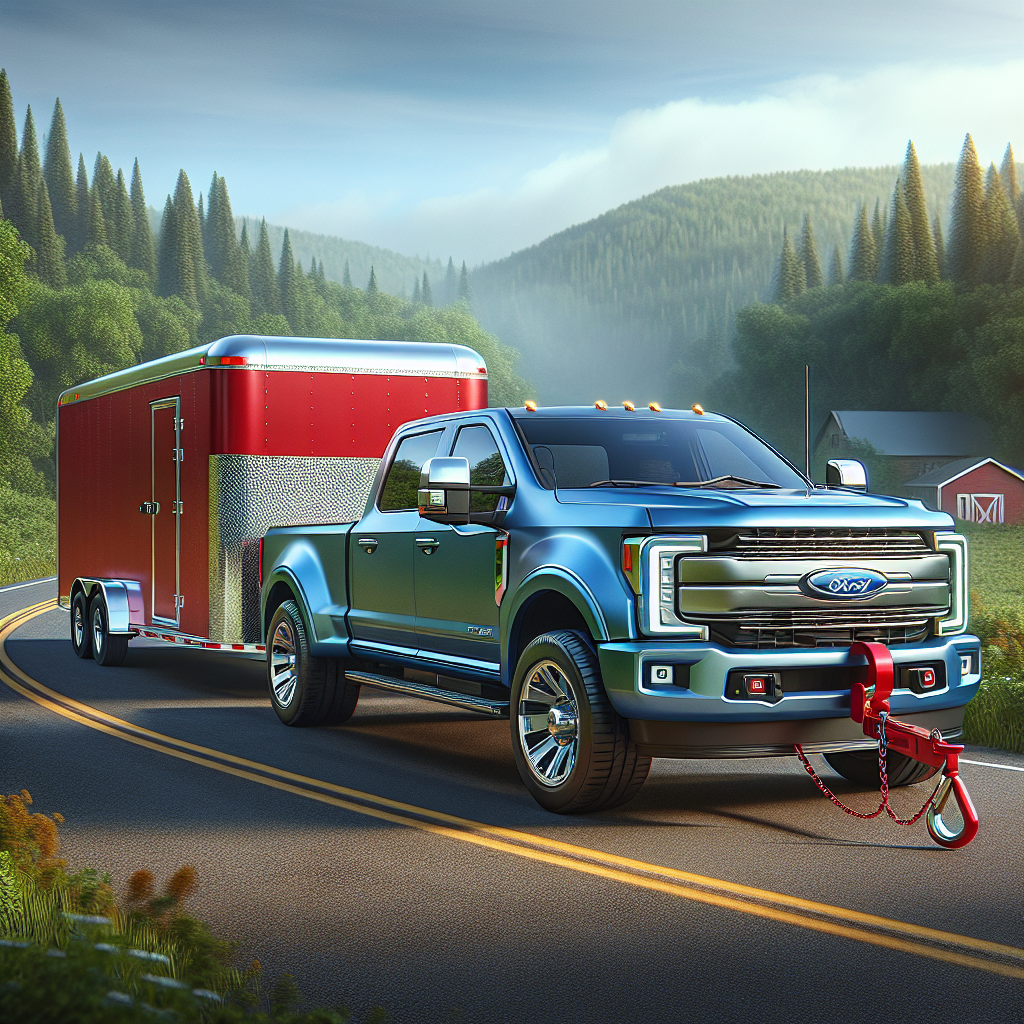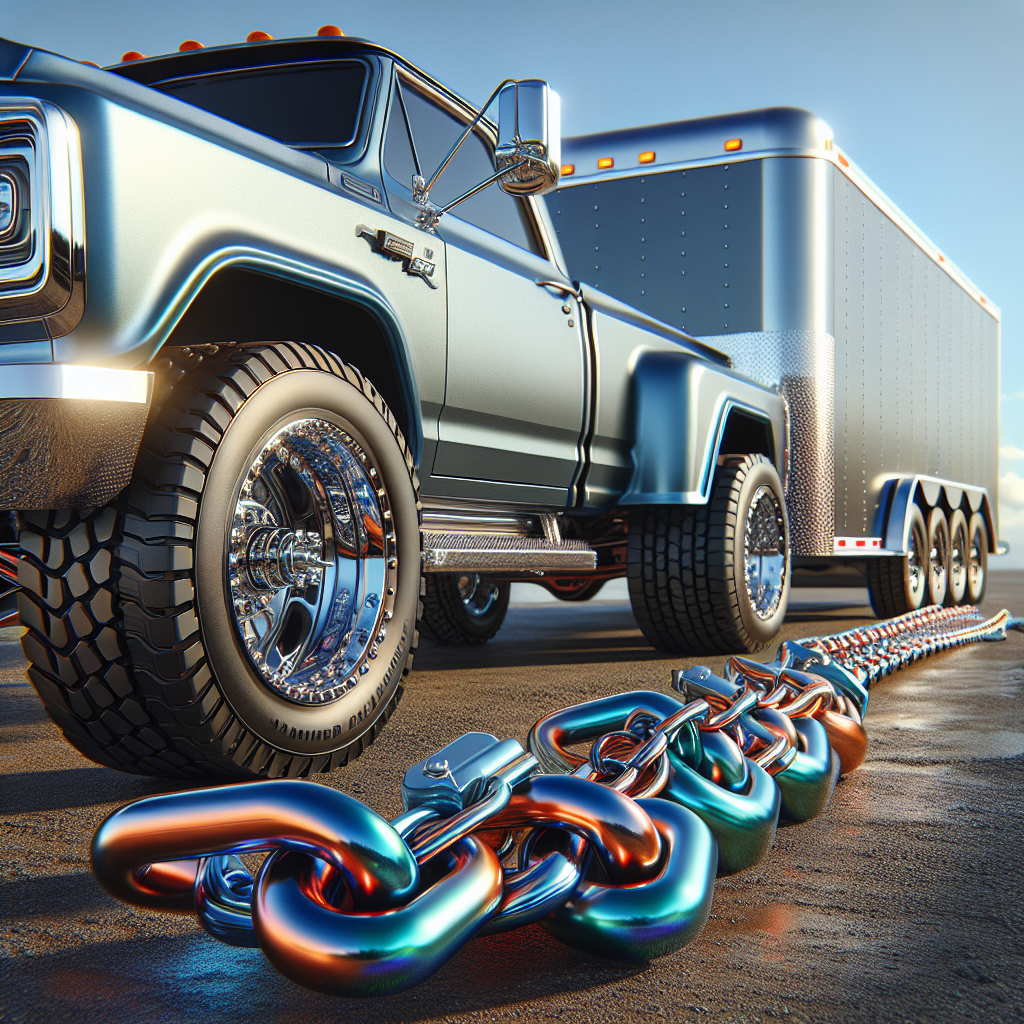When towing a trailer, the importance of safety chains cannot be overstated. They serve as a critical backup mechanism that ensures the trailer remains securely attached to the tow vehicle in the event of a hitch failure or disconnection. Understanding the role of these chains is essential for anyone who frequently tows trailers.
Safety chains provide an additional layer of security through the following means:
- Preventing Accidents: In the unfortunate event of a hitch failure, safety chains can help keep the trailer attached to the tow vehicle, reducing the risk of accidents that can arise from a detached trailer.
- Maintaining Control: By ensuring the trailer remains connected, safety chains help maintain control during towing, allowing for safer navigation on the road.
- Compliance with Regulations: Many states and jurisdictions have specific laws regarding safety chain usage. Not adhering to these laws can result in fines and increased liability in case of an accident.
In essence, safety chains are not just a legal requirement; they are a vital component of towing safety. By using them correctly, you can significantly decrease the risk of catastrophic events while on the road.
Tow with peace of mind, knowing that trailerwatchdog is standing guard.
Key Regulations Governing Trailer Safety Chains

Understanding the key regulations governing trailer safety chains is essential for safe towing practices. These regulations vary by state and can dictate how safety chains should be used, including their strength, length, and attachment methods.
Some common regulations include:
- Chain Strength: Many jurisdictions require that safety chains be rated to handle a specific weight capacity, typically at least 50% of the trailer's gross weight. This ensures that the chains can withstand the forces exerted during towing.
- Attachment Method: Safety chains must be securely attached to both the trailer and the towing vehicle. Regulations often specify that chains should be crossed under the trailer tongue to catch it if it becomes detached.
- Length Requirements: Chains must be long enough to allow for smooth turns and movement but not so long that they drag on the ground. Some regulations specify maximum and minimum length requirements.
- Visibility: In some areas, the safety chains must be visible when the trailer is attached to the towing vehicle. This requirement helps ensure that other drivers can see the chains, enhancing safety.
Complying with these regulations is not only crucial for legal reasons but also significantly enhances overall towing safety. As such, it's important for trailer owners and operators to familiarize themselves with local laws and guidelines to ensure safe towing practices.
Proper Installation Techniques for Safety Chains
Installing safety chains correctly is vital for ensuring the security of your trailer while towing. Proper installation techniques can help prevent accidents and provide peace of mind during your travels. Here are some essential techniques to follow:
- Choose the Right Chains: Always select safety chains that are rated for your trailer's weight. Ensure they are made from high-quality materials to withstand the stresses of towing.
- Attach to the Right Points: Safety chains should be attached to designated points on both the trailer and the towing vehicle. Use the clevis hooks or safety chain loops provided on your trailer.
- Cross the Chains: When attaching the chains, cross them under the trailer tongue. This creates a cradle effect, catching the trailer in the event of a disconnect, preventing it from hitting the road.
- Ensure Adequate Slack: While the chains should be tight enough to prevent dragging, they must have enough slack to allow for turns without straining. Avoid overly tight installations that could lead to breakage.
- Inspect Regularly: After installation, it's crucial to regularly inspect the chains for wear, kinks, or damage. Replace any chains that show signs of wear to maintain safety.
By following these proper installation techniques, you can significantly reduce the risk of accidents while towing. Ensuring that your safety chains are correctly installed not only benefits your trailer but also enhances the safety of everyone on the road.
Common Mistakes to Avoid with Safety Chains

Understanding common mistakes made with safety chains can help you avoid potential accidents and ensure a safer towing experience. Here are some frequent errors that many trailer owners encounter:
- Using Inadequate Chains: One of the biggest mistakes is using safety chains that are not rated for the trailer's weight. Always check the weight rating to ensure they can handle the load.
- Incorrect Attachment: Failing to attach the chains to the designated points on both the trailer and the towing vehicle can lead to disconnection. Always follow the manufacturer's guidelines for proper attachment.
- Insufficient Slack: Many people make the error of leaving too much slack or not enough. Chains should have just the right amount of slack to allow for turning without dragging on the ground.
- Neglecting Regular Inspections: Ignoring to inspect safety chains regularly can lead to undetected wear and tear. Regular checks can help identify issues before they become serious problems.
- Not Crossing the Chains: Failing to cross the safety chains under the trailer tongue is a common mistake. This technique is crucial for creating a cradle that catches the trailer if it detaches.
Avoiding these common mistakes can significantly enhance the safety of your towing experience. By being mindful of these pitfalls, you can ensure that your trailer remains secure and stable on the road.
Best Practices for Maintaining Safety Chains

Maintaining safety chains is essential for any trailer owner who prioritizes safety while towing. Here are some best practices to ensure your safety chains remain in optimal condition:
- Regular Inspections: Perform routine inspections of your safety chains to check for signs of wear, rust, or fraying. Look for any *damage* that could compromise their strength.
- Proper Cleaning: Keep your safety chains clean and free from debris, dirt, and road grime. A simple wash with soap and water, followed by thorough drying, can help prevent corrosion.
- Lubrication: Apply a light coat of lubricant to the chain links and attachment points to prevent rust and ensure smooth operation. This is particularly important in areas with harsh weather conditions.
- Check for Proper Length: Ensure that your safety chains are of the correct length for your trailer setup. Chains that are too long can drag on the ground, while those that are too short can put unnecessary tension on the towing connection.
- Secure Storage: When not in use, store your chains in a dry and secure location to protect them from environmental damage. Consider using protective covers if they will be exposed to the elements.
By adopting these best practices, you can extend the lifespan of your safety chains and significantly improve your towing safety. A little maintenance goes a long way in ensuring peace of mind on the road.
When to Replace Safety Chains for Optimal Safety

Understanding when to replace safety chains is crucial for maintaining optimal safety while towing. Even the most durable chains will eventually wear out or become compromised. Here are key indicators that it's time for a replacement:
- Visible Damage: If you notice any cracks, bends, or severe rust on the chains, it's time to replace them. These visible signs indicate that the structural integrity of the chains may be compromised, increasing the risk of a failure.
- Excessive Wear: Chains that show signs of fraying or thinning should be replaced immediately. This type of wear weakens the chains and can lead to catastrophic failures during towing.
- Increased Tension: If you find that your safety chains are consistently under excessive tension, it may be necessary to upgrade to a stronger set. Over time, the stress can cause the chains to stretch or deteriorate.
- Age of the Chains: Even if safety chains appear to be in good condition, it's advisable to replace them every few years as a precaution. Regular wear and environmental factors can weaken chains, making it vital to stay proactive.
By staying vigilant and replacing safety chains when necessary, you can help prevent accidents and ensure a safer towing experience. Tow with peace of mind, knowing that trailerwatchdog is standing guard.

